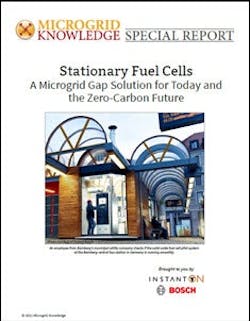There are a number of customers that can’t wait the one to two years that it typically takes to get a microgrid permitted, installed and brought online. These customers, which are often data centers and industrial facilities that have high power demands, also can’t use the solar and battery storage systems often found in homes and small businesses because they don’t provide enough power. These customers need a microgrid gap solution — they need fuel cells.
A new special report from Instant On and Bosch is designed to teach the basics of fuel cells to microgrid developers and service professionals. The report covers how fuel cells can serve as a microgrid gap solution and how they enable a transition to a zero-carbon future. The author also explains how this technology provides new opportunities for professionals such as distributed energy resource installers, plumbers, and engineering, procurement and construction contractors.
The special report includes a case study of how California City, California, is using fuel cells to address power capacity issues.
